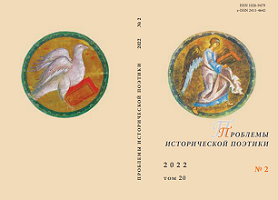Легенда о гамельнском крысолове в важской рукописи конца XVII в.
The Legend of the Pied Piper of Hamelin in the Late 17th Century Vazhe Manuscript
Author(s): Svetlana Alekseevna SemiachkoSubject(s): Culture and social structure , Sociology of Culture, Theory of Literature, Sociology of Literature
Published by: Петрозаводский государственный университет
Keywords: the legend of the Pied Piper of Hamelin; plot; translation; cryptography; literary game; baroque; source; Saxon chronicles; Zadne-Nikiforov monastery; “Kriny Selnye”;
Summary/Abstract: The article is devoted to the first appearance of the Pied Piper of Hamelin legend in the Russian literary tradition. The text of the legend was found in the 1694 manuscript from Vazhe Lake and is now kept in the State Historical Museum (State Historical Museum. Museum collection. No. 2846). The complex structure of this text shows that it went through several stages before it became a part of the collection. The original source of the legend in this manuscript is a Saxon chronicle of the middle — third quarter of the 16th century. Then it was included in a work (or perhaps a message) by a certain “Arnold Frentaggij” (1580), which was translated into Russian along with this text. Between the initial text and Arnold’s message, an oral version of the legend was in circulation over a period of time, when its plausibility was questioned and when the plot could have undergone a transformation. During the translation process, changes could have occurred if the translator was not particularly well-acquainted with the vocabulary of the original language. As a result, the exact date of the incident in Hamelin disappeared from the legend, and the rat-catcher turned from a flutist into a tympanum player. This version of the plot, which seems unique, did not receive further development after ending up in the Vazhе Lake area, in the wilderness of the Karelian forests. The author of the article reproduced the text of the legend according to the No. 2846 manuscript, offered a decipherment of the scribe’s record with his name, articulated certain thoughts about the point of departure of the person who came to Vazhe Lake, and formulated a number of questions regarding the subsequent study of the discovered text.
Journal: Проблемы исторической поэтики
- Issue Year: 20/2022
- Issue No: 2
- Page Range: 231-246
- Page Count: 16
- Language: Russian

